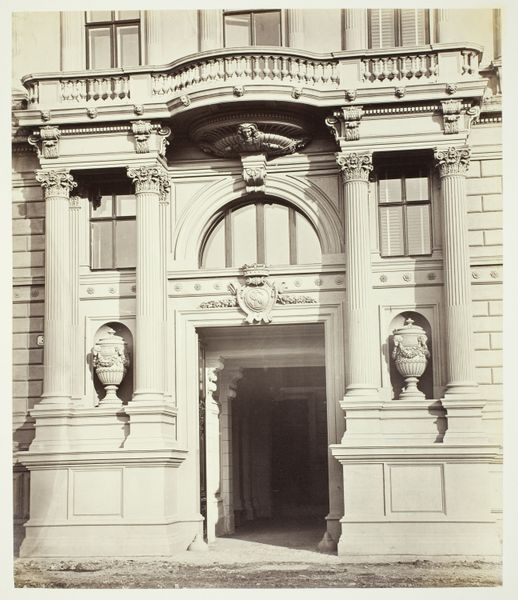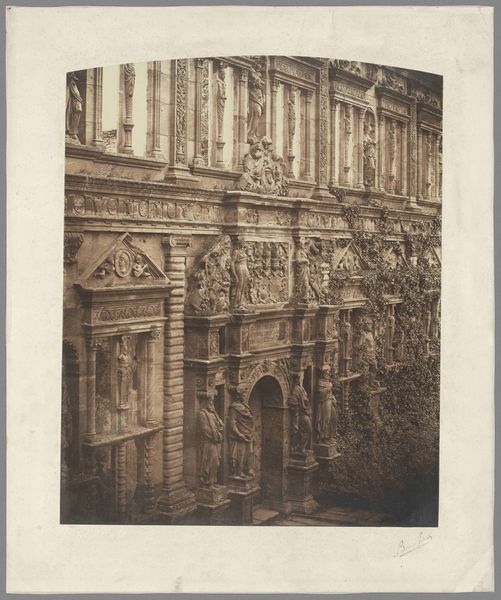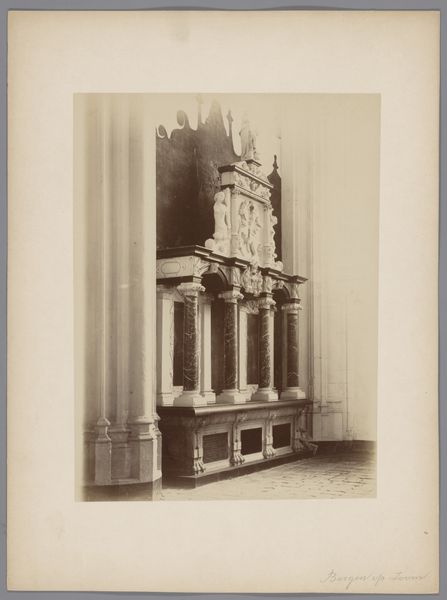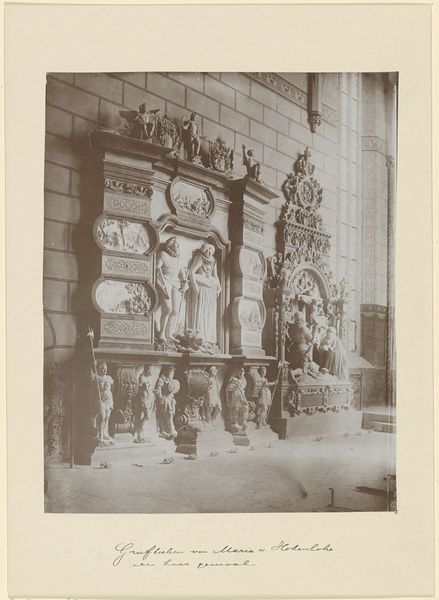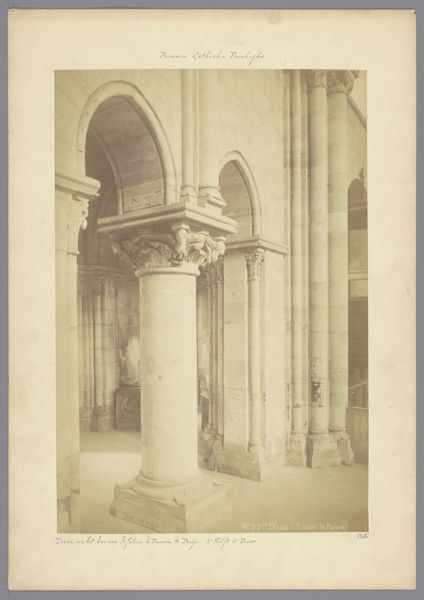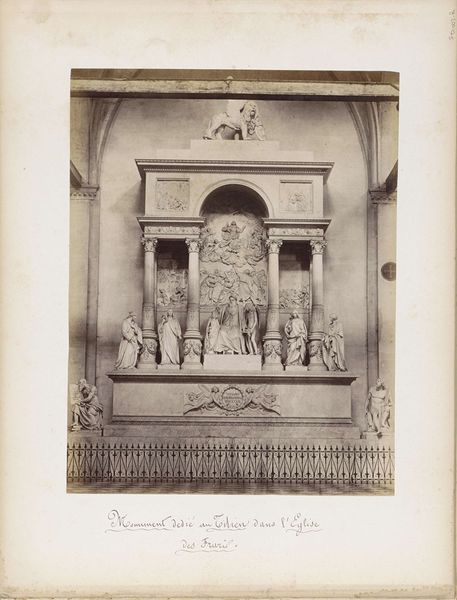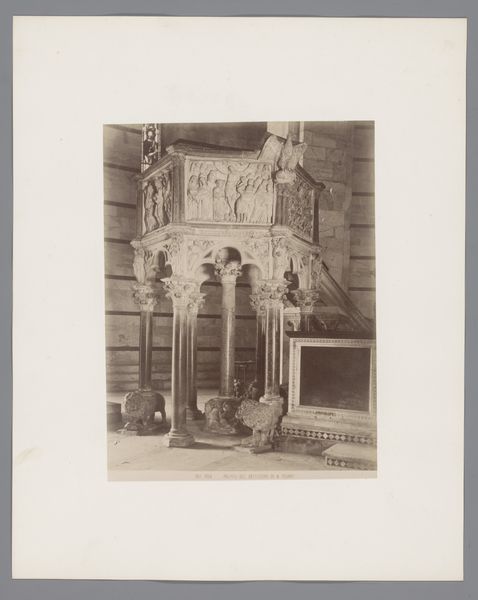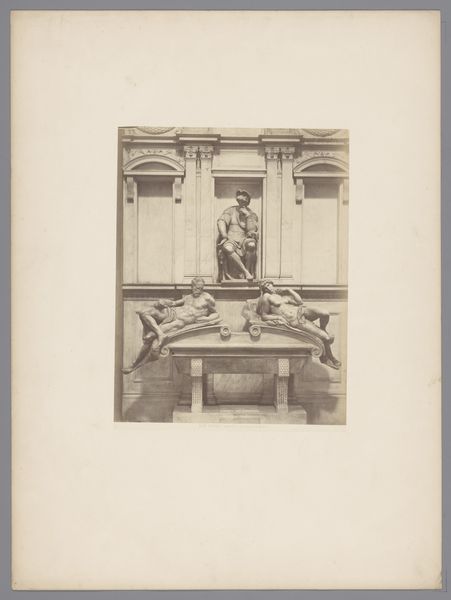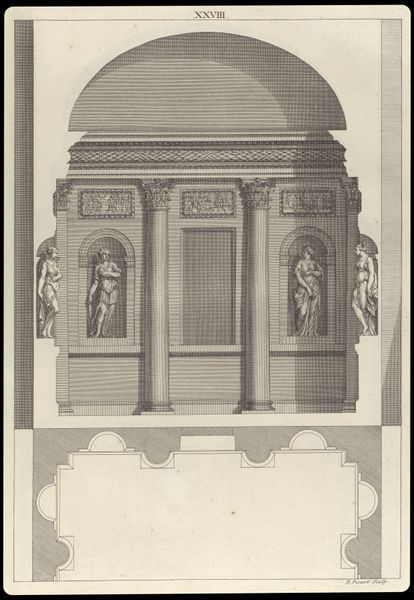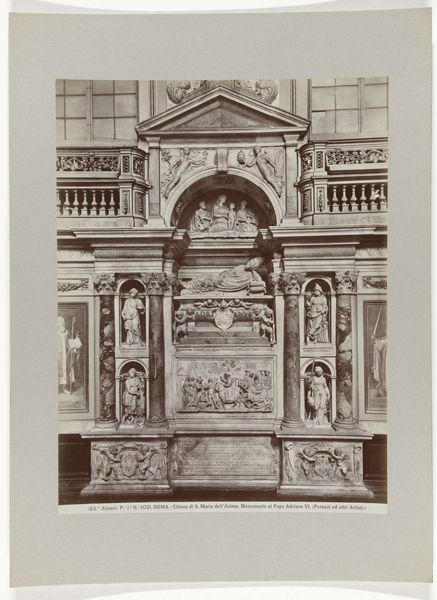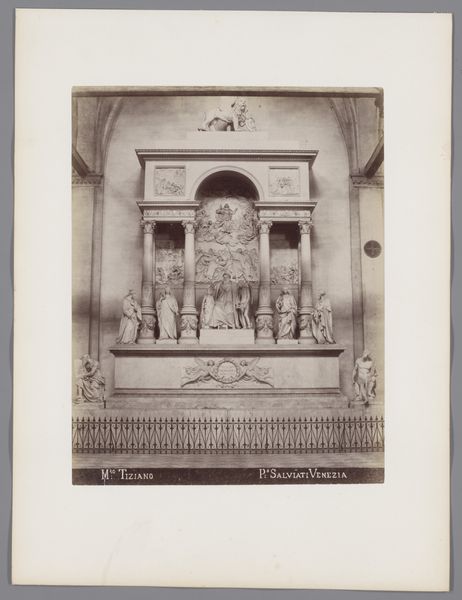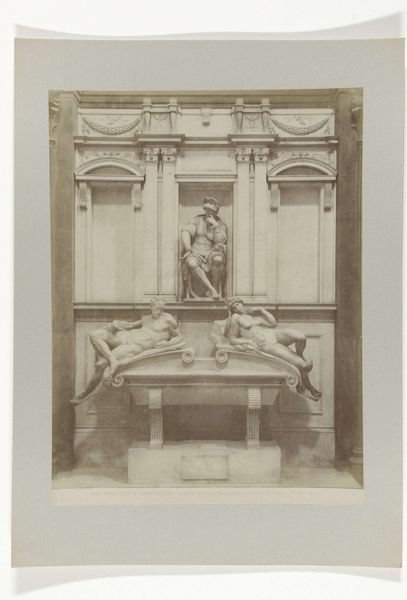
Albrechtsbrunnen voor paleis Erzherzog Albrecht in Wenen, Oostenrijk 1869 - 1900
0:00
0:00
Dimensions: height 306 mm, width 374 mm
Copyright: Rijks Museum: Open Domain
Editor: This photograph captures the Albrechtsbrunnen in front of the Palais Erzherzog Albrecht in Vienna, sometime between 1869 and 1900, attributed to M. Frankenstein & Co. It’s quite imposing. The architecture feels very ordered and…permanent. What stands out to you? Curator: Indeed, the permanence you perceive speaks volumes. The classical architecture and the clear light evoke a specific historical consciousness, one deliberately reaching back to Roman ideals of civic virtue and imperial stability. Look at how the statues are positioned within the niches—echoing the poses and drapery of classical sculptures. It begs the question: what does linking Vienna to the grandeur of the Roman Empire mean in the late 19th century? Editor: So it’s about more than just aesthetic imitation? It’s making a statement? Curator: Precisely. Think about Vienna at this time – the center of the Austro-Hungarian Empire, a multicultural, multilingual realm grappling with its own identity and legacy. This fountain isn't simply decorative. It's a visual argument, claiming a heritage of power and civilization for the Habsburgs. Note how the water, a symbol of life and renewal, flows from classical figures associated with wisdom and strength. What message does that imagery transmit, do you think, to the viewer? Editor: It feels like a carefully constructed story about power, suggesting that the Empire is built on a foundation of strength and wisdom from the past. Curator: Exactly. And consider how photography itself plays a role. This print immortalizes the Albrechtsbrunnen, broadcasting the message of stability far beyond Vienna's walls. Do you think that the photographic medium lends further authority? Editor: It does give it an objective, almost documentary feel, reinforcing the sense of established order. I hadn’t considered all those layers of meaning embedded in what seemed like a straightforward architectural image! Curator: Visual symbols always resonate far beyond their immediate appearance; it's about understanding the web of cultural associations that make them so powerful.
Comments
No comments
Be the first to comment and join the conversation on the ultimate creative platform.
